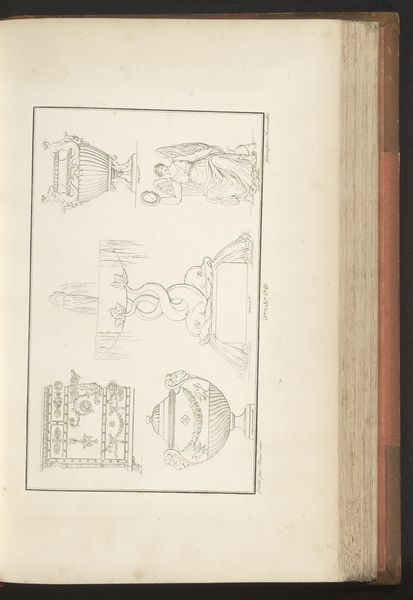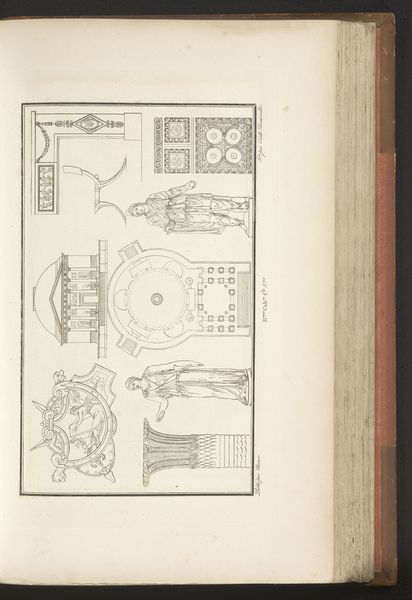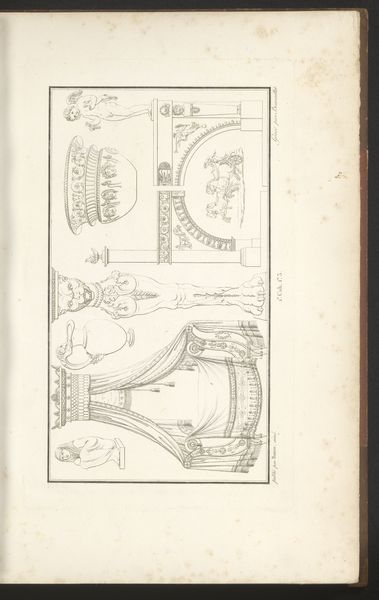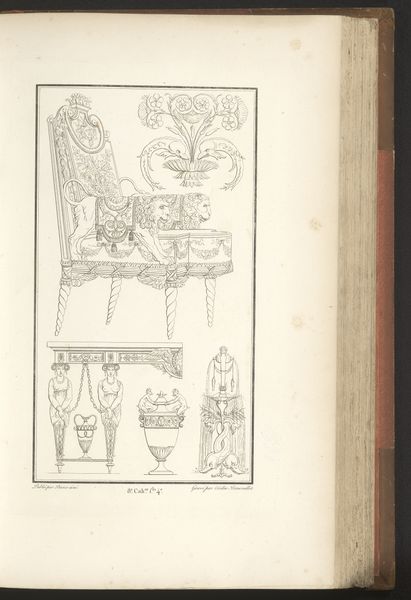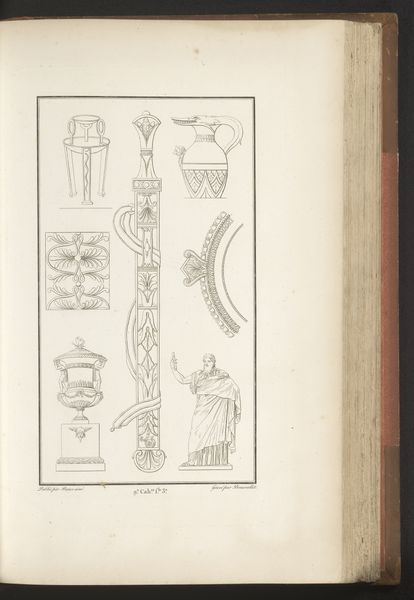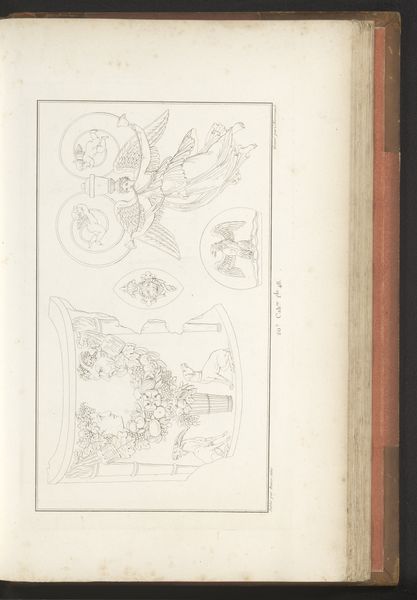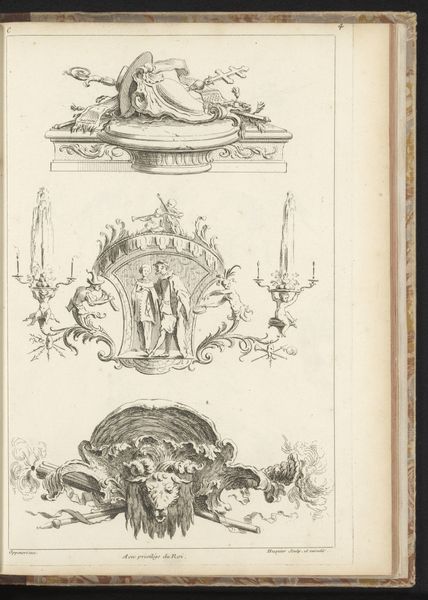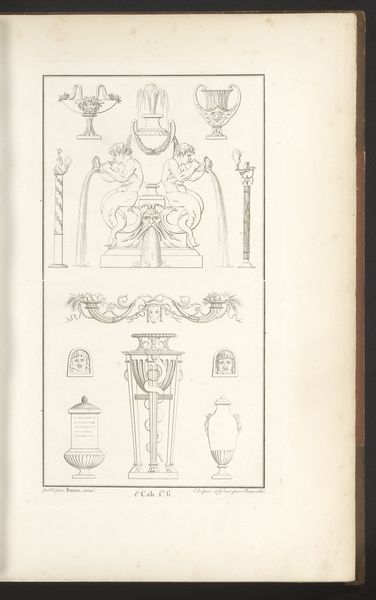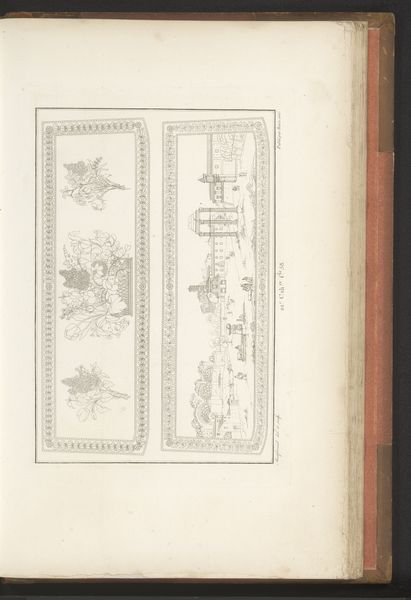
drawing, paper, ink
#
portrait
#
drawing
#
neoclacissism
#
classical-realism
#
paper
#
ink
#
geometric
#
line
#
decorative-art
Dimensions: height mm, width mm
Copyright: Rijks Museum: Open Domain
Editor: Here we have "Fontein en klok", created around 1820 by Pierre-Nicolas Beauvallet. It’s an ink drawing on paper, a whole collection of neo-classical designs, really. There's almost a blueprint quality to the piece as a whole. What do you make of it? Curator: Blueprints, hmmm...yes and no. It breathes of a world obsessed with precision, clean lines. That clock, for example, frozen in time with cherubs heralding its importance! Do you find the clock out of place next to, say, the serene fountain? It almost feels like two different sensibilities, a divine comedy played out with ink. Editor: I see what you mean. The clock has these dynamic figures, and the fountain is static, monumental even. Was this typical for Neoclassical art? Curator: Oh, the neoclassical world, my dear, was a playground of contradictions! An ordered fountain could coexist with a wild allegory about time! Artists and designers sought to recapture the 'ideal' of classical beauty but with the bombast of empire, it was an aspirational reaching backwards for the building blocks of how they saw things. It feels like Beauvallet is presenting design *ideas*, the possibilities bubbling in the collective conscious. Each object wants its stage. What possibilities do they invoke in you? Editor: That's insightful. Thinking of them as raw possibilities makes the juxtaposition of fountain and clock make sense. They represent the scope of his design considerations! I'll never see neoclassical art quite the same way again. Curator: Indeed. Art has always functioned as a storehouse of inspirations to those with imagination.
Comments
No comments
Be the first to comment and join the conversation on the ultimate creative platform.
